When I think of landscape painting, one of the first artists who comes to mind is Edgar Payne. He was one of America’s most prominent landscape painters who had a remarkable eye for composition and color (he literally wrote what many consider to be the book on landscape composition). In this post, I will cover:
(Before diving into this post, make sure to pick up a copy of my free Landscape Painting Starter Kit.)
Key Facts
Here are some of the key facts about the life of Edgar Payne:
- He was born on 1 March 1883 in Missouri.
- He was largely a self-taught artist. He did enroll for a short period at the Art Institute of Chicago to study portrait painting but dropped out after just two weeks as he found it too structured.
- He got his first major commission in 1917 from Santa Fe Railroad as part of an advertising campaign to attract tourism. This required Payne to explore and paint areas in the Southwest, including the Grand Canyon, Canyon de Chelly and Northern New Mexico. The commission helped establish Payne’s reputation as an artist and paved the way for the rest of his prolific career.

- Some of his most famous works feature the Sierra mountains, which were a constant source of inspiration for him. He would often venture to the upper lakes of the Sierra Nevada on horseback to paint. He even produced a documentary named “Sierra Journey”, but this is more for tourists rather than artists.

- He became so prolific that a lake was named after him.


- After the Santa Fe Railroad commission finished, he received a commission from the Congress Hotel in Chicago for an 11,000-square-foot mural.
- In 1941 he wrote Composition of Outdoor Painting, a comprehensive guide to landscape composition. This book is still considered by many artists to be the book on landscape composition. It contains many composition theories and layouts which are fundamental in landscape painting today.
- He was married to Elsie Palmer Payne, who was a successful artist in her own right. It is safe to say her work was shadowed by the prolific career of Edgar. The couple separated in 1932, but she returned to him in his later years when he was battling cancer. He passed in 1947.

Style and Technique Breakdown
Payne painted with a distinct, impressionist style. He probably owes part of his distinct style to his decision to go the self-taught route rather than the rigid, academic route.
Many of his paintings feature a strong use of shape. He was extremely good at breaking complex subjects down into really basic color shapes. This is particularly evident in his paintings of mountains, like the one below. He used large brushes to paint distinct shapes of light and dark blue. This is very efficient brushwork. The end result is a very blocky style which seems to work well for the rigid mountains.


Payne’s adventurous use of color is another signature aspect of his work. He pushed his colors to create the illusion of light, often painting with rich oranges, blues, and purples, like in the painting below. It is difficult to paint with this much color as it can end up looking garish if you overdo it.

He often painted strong contrasts between light and dark, or saturated and dull. In the painting below, the dark foreground contrasts against the high-key colors in the background. Also, notice how he used light orange for the snow (not pure titanium white).

Sometimes, Payne painted with a more reserved color palette, like in the painting below which features mostly grays and other weak colors. I personally prefer his more vibrant paintings.

Payne did not only paint mountains and vast landscapes. The painting below features a close up of two beautiful yellow-leaved trees and a glimpse through to the light background. This is one of my favorite paintings by Payne and a perfect example of how to paint the illusion of light.

He also painted many sailboats in his signature style of solid color shapes.


The painting below demonstrates a beautiful depth as it transitions from rich and relatively dark colors in the foreground to weak and tinted colors in the background. Payne also seems to have used warmer colors in the foreground.

Sketches
I always enjoy looking at sketches and studies done by master artists. It gives you a behind-the-scenes look at how they worked. Here are some sketches by Payne:


Edgar Payne Quotes
“Art comes into being in that abstract interval between a thought and reality, and no one – not even the artist who created it – can remeasure the influences that caused it.”
“The study of art is a lifetime matter. The best any artist can do is to accumulate all the knowledge possible of art and its principles, study nature often and then practice continually.”
“To be original one needs to learn the ideas of other painters in order to be different from them.”
“Learning the art of painting is not an easy task. It takes a great deal of intelligence, keen analysis, study and practice.”
“The average artist, if he chooses, could render an exact drawing of what he sees. Artistic work not only allows but demands some deviation from form and line. Just how far this may go depends on the viewpoint of each painter.”
Thanks for Reading!
I appreciate you taking the time to read this post and I hope you found it helpful. Feel free to share it with friends. If you ever want to learn more, check out my Painting Academy course.
Happy painting!
Dan Scott

Draw Paint Academy

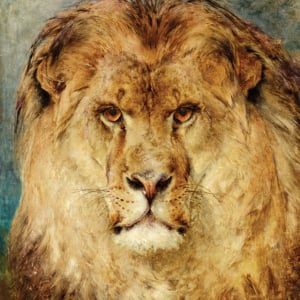
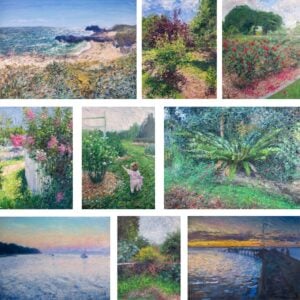
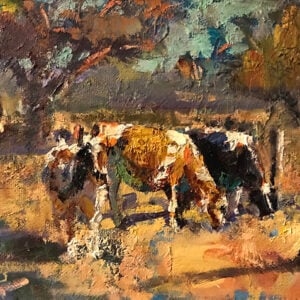
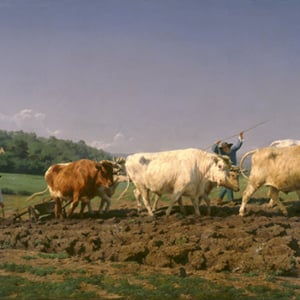
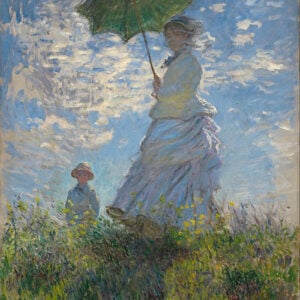
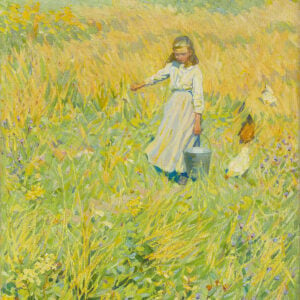
Very enjoyable read. Enough depth to want to know more and yet terse enough to hold one’s interest.
Tnx!
Michael
Thanks Michael! Dan
Loved this! Never heard of Payne before, but I love his style!
That’s what I want to achieve!
Thank you
Sybille
I am sure you can achieve a similar style Sybille. Keep practicing! Dan
Hi ,I loved reading this,Thank you so much .I am a lady of 76 years and love to try to paint ,I find it so relaxing. You have given me encouragement to keep going ,so thank you .By the way I live in Dorset in the UK, but often visit the mountains of Yosemite as my son and family are lucky enough to live nearby. Thanks again ,Sue Tresidder x
That’s great to hear Sue! Happy to help. Thanks, Dan
I enjoyed this whole article on Payne and your analysis of his particular works. I am looking forward to your future articles. Thank you for this Blog.
Are you the chef, Patricia. Wells?
Thanks Patricia, more to come! Dan
Hi Patricia
Did you run a gallery near Thornbury England ?
That was very exciting Dan, I do enjoy these articles on landscape painting.Would I be able to find a book on this artist. Thank you. Pat Findlay
Happy to hear Pat! There is a book on composition by Payne mentioned in this post. It is called “Composition of Outdoor Painting”.
Hello.I am 61 and like to read about art all i can and take notes, and keep them so i can go back for reference. I love this man’s paintings, . I’ll do my best to study more about this man and try to copy and learn.
Thank you for the study
That’s a good idea Ralph, keep up the good work! Thanks, Dan
Enjoyed!!!! Very helpful!!!! Thanks for all your painting tips.
My pleasure Rosalind. Thanks, Dan
I like your article about this artist, which work was very impressive for me. I like his style and will find more information about him and his work. Thanks so much to introduce him to all of us.
No problem at all Larissa, glad you enjoyed the post! Dan
Thanks, really nice piece.
Thanks Amy. Dan
Never heard of this chap Payne, however your notes and illustrations are most instructive, altho 87 years young I still ‘ have a go’ now and then. Amazing one is always picking up tips and information, thank you for broadening my knowledge on art and artists in such an easy manner.
Happy to have helped Hazel! Thanks, Dan
Thank you Dan, love seeing Edgar Payne’s work!
No problem Joan! Me too, Dan
Dan, thanks a lot. I love theinformation you give us. It is so helpful for self taught people as many of us.
I was also very happy to discover Edgar Payne. Very nice work. Thank you for all your wonderful help.
Thanks for your kind words Corinne! Happy to hear you enjoyed the post. Dan
Thank you for bringing edgar to my awareness… i am inspired by his being self taught and use of brilliant color…i learned some valuable points by reading your article and carefully observing the photos
Thank you so much for what you offer
Your articles are helping me grow as a budding artist at 70
Thank you Dan. I agree with you on his colorful paintings vs his more reserved colors. I want to stop painting just from photographs and do some outdoor live painting. I enjoy all your articles very interesting and very helpful
Thanks Sofia, great to hear! Dan
Thanks for sharing Scott, Edgar is an amazing self taught painter, amazing paintings
No problem Mark! Thanks, Dan
Thanks for covering briefly the work of a self taught painter. although we know we are all borrowers of technique, that is one way we learn as He aptly pointed out in his quotes. Very well done Dan, it inspired me to get out there and paint more, and to use larger brushes.
That’s great to hear Lloyd! I am happy to have helped. More to come… Thanks, Dan
Dan, until now I’d never heard of Edgar Payne however, thanks to you, he’s now been added to my growing list of favourite artists. I love his impressionist style to which I aspire on my journey albeit late in life. Thank you!
Happy to hear this Mike! Dan
Hi Dan,
Just stumbled on this post whilst on Pinterest looking at Paynes paintings.
Glad I did, this is a good post, thanks for sharing.
Dave M (AUSTRALIA)😎😎
Thank you for this great article–I love Edgar Payne. Do you know what colors he used in his palette? I have tried to copy one of his sailboat paintings but I cannot mix the vibrant turquoise. Do you know what he used?
Thanks- enjoyed the comparisons of his work. Love any painting of the west but I agree the yellow Sycamore tree is my favorite . amazing light
‘O joy’: A link led me to Edgar Alwin Payne’s art. …
lg
Former co-director : The (JMW) Turner Museum Denver, CO
1984-1996
A link led me to Edgar Alwin Payne’s art. TRULY extraordinary and accomplished visuals … .
lg
Former co-director
The (JMW) Turner Museum Denver, CO
1984-1996
I love Edgar Payne’s painting! His style , colors and the use of the large brush work ! Truly the style I want to lean towards. Thank You Dan for all the informative Art works!
Thank you! What an inspirational way to start the day.
I knew I did the right thing by signing up with you. Your references of land scape artist is a treasure trove . Cannot wait to see the other categories.
This painter’s commitment to being in vast, awesome landscapes is so evident in his treatment of shadows and the exceptionally daunting task of rendering the scale of these mountainous places in paint. I have a long standing friendship with a self taught painter who has also spent a lifetime in such environments around the world, but particularly in the USA. The high Sierras were a special challenge. It is so interesting to read how Edgar Payne tackled the problem with such outstanding success. Perhaps my friend makes life even more difficult by using watercolour on a vast scale in situ. I have always been a little suspicious of artists who use travel logs as a way to sell their work (and I note Mr Payne also addressed the needs of tourism) but clearly his intelligent, honest response to the environment is not of this calibre or genre. If interested in an alternative approach, google Tony Foster at Palo Alto, where his watercolour journeys are curated.
Top-notch intro to Edgar Payne’s work. Learned a lot and enjoyed myself a ton! Many, many thanks! Bob
I have Payne’s book on Composition and it is one of the best. Thanks for making this post as l truly enjoyed it. And l loved the Payne quotes you put in at the beginning!
Great article, great artist. I live in Brasil but I lved in New Mexico for some years studying. The mountais are gorgeous to paint because they chance color every hour. I love painting and read about paintings and painters! Helenita Franco, Porto Alegre, Brasil